-
IP addresses are NOT logged in this forum so there's no point asking. Please note that this forum is full of homophobes, racists, lunatics, schizophrenics & absolute nut jobs with a smattering of geniuses, Chinese chauvinists, Moderate Muslims and last but not least a couple of "know-it-alls" constantly sprouting their dubious wisdom. If you believe that content generated by unsavory characters might cause you offense PLEASE LEAVE NOW! Sammyboy Admin and Staff are not responsible for your hurt feelings should you choose to read any of the content here. The OTHER forum is HERE so please stop asking.
You are using an out of date browser. It may not display this or other websites correctly.
You should upgrade or use an alternative browser.
You should upgrade or use an alternative browser.
If not for Indians building Singapore's infrastructure, Singapore would still be a SLUM
- Thread starter rajmanickam
- Start date
- Joined
- Oct 22, 2008
- Messages
- 4,050
- Points
- 113
sorry hor roti prata origin is not indian to begin with ..and all steamed foods origin is chinaI love roti prata!
- Joined
- Mar 5, 2019
- Messages
- 11,137
- Points
- 113
mmm.... opium is only the 3rd choice. the 1st two are ganja and hashish. The prevalence of use in india of hashish amongst a certain subgroup lent it to creating a loanword of a different meaning in English.It is absolute proof that chinese people are daft and stupid. We Indians will never be addicted to opium. Yellow skin Chinese are indeed dumbfucks!
- Joined
- Mar 5, 2019
- Messages
- 11,137
- Points
- 113
You're right, because I've never seen the thing in India at all, but where is it actually from? Yes I agree, China has a long and illustrious history in steaming foods.sorry hor roti prata origin is not indian to begin with ..and all steamed foods origin is china

- Joined
- Mar 5, 2019
- Messages
- 11,137
- Points
- 113
sinkies can never compete with 3rd world slumboys when it cums to hard work, resourcefulness, vision, and sheer grit and determination.
that is deeply impressive!

Chinese knows a better ways of making roti prata. Into a buns, steamed more healthy.
Ah neh is dirty food handling, left hand wipes arseshits.... right hand who know what they do with it when they shit in toilet. Play with dicky I guess.
Ah neh is dirty food handling, left hand wipes arseshits.... right hand who know what they do with it when they shit in toilet. Play with dicky I guess.
I love roti prata!
- Joined
- Oct 22, 2008
- Messages
- 4,050
- Points
- 113
you are wrong lar ,friend ...roti prata is quite poular in south india too and malaysia called roti cennai ....but south indians are rice eating kind and roti is wheat based...even among chinese how did wheat based food mingled where the southern chinese are rice eaters..it was presumed the Hakkas from North china flow introduced wheat based foodies to south china folksYou're right, because I've never seen the thing in India at all, but where is it actually from? Yes I agree, China has a long and illustrious history in steaming foods.
but roti prata is not exactly a north indian food into south either as they do have their own version the chappati which is eaten daily for all the meals...as you would notice its the south indian muslims greatly involved in this trade...hence my speculation ,roti prata is middle eastern
now ,about steam foods in india ,the one of the earliest chinese ancient traveller to india ..think,Faxian in 400 AD,had actually recorded and alarmed that there exist no utensils to steam food in ancient india ..which simply means steaming food is common way of life in ancient china as well
- Joined
- Mar 5, 2019
- Messages
- 11,137
- Points
- 113
you are wrong lar ,friend ...roti prata is quite poular in south india too and malaysia called roti cennai ....but south indians are rice eating kind and roti is wheat based...even among chinese how did wheat based food mingled where the southern chinese are rice eaters..it was presumed the Hakkas from North china flow introduced wheat based foodies to south china folks
but, but you said :
sorry hor roti prata origin is not indian to begin with
so which is it?

Malaysia calls it roti canai not cennai.
- Joined
- Jun 11, 2017
- Messages
- 20,134
- Points
- 113
but, but you said :
so which is it?
Malaysia calls it roti canai not cennai.
You right...Malaysians knew the traditional Indian name of Madras long before the change by the Tamil Nadu gahmen in 1996 to Chennai.
- Joined
- Oct 22, 2008
- Messages
- 4,050
- Points
- 113
yes ,roti prata not being originally an indian food means the origin is most likely middle eastern brought to s .india by ancient middle eastern tradersbut, but you said :
so which is it?
Malaysia calls it roti canai not cennai.
whether roti cennai or canai is a mattet of pronounciation for chennai ...the capital of Tamils ..ask any Malay or Malaysian what canai means and he or she will go blurr ...mine is simply applying common sense by putting 2 to 2 togather, pal
- Joined
- Jul 25, 2008
- Messages
- 63,393
- Points
- 113
i am so impressed he got it done, caught a fish, peng kang fish in bamboo, brought to his new hideout by the pool, makan fish and went to nap. next morning he swam in his pool, watered the lawn, chilled out on his makeshift recliner, and left..... for another project deep in the forest. wah lan eh. all these with only a broomstick.... oops crowbar cum chankol.that is deeply impressive!
- Joined
- Sep 22, 2008
- Messages
- 90,287
- Points
- 113
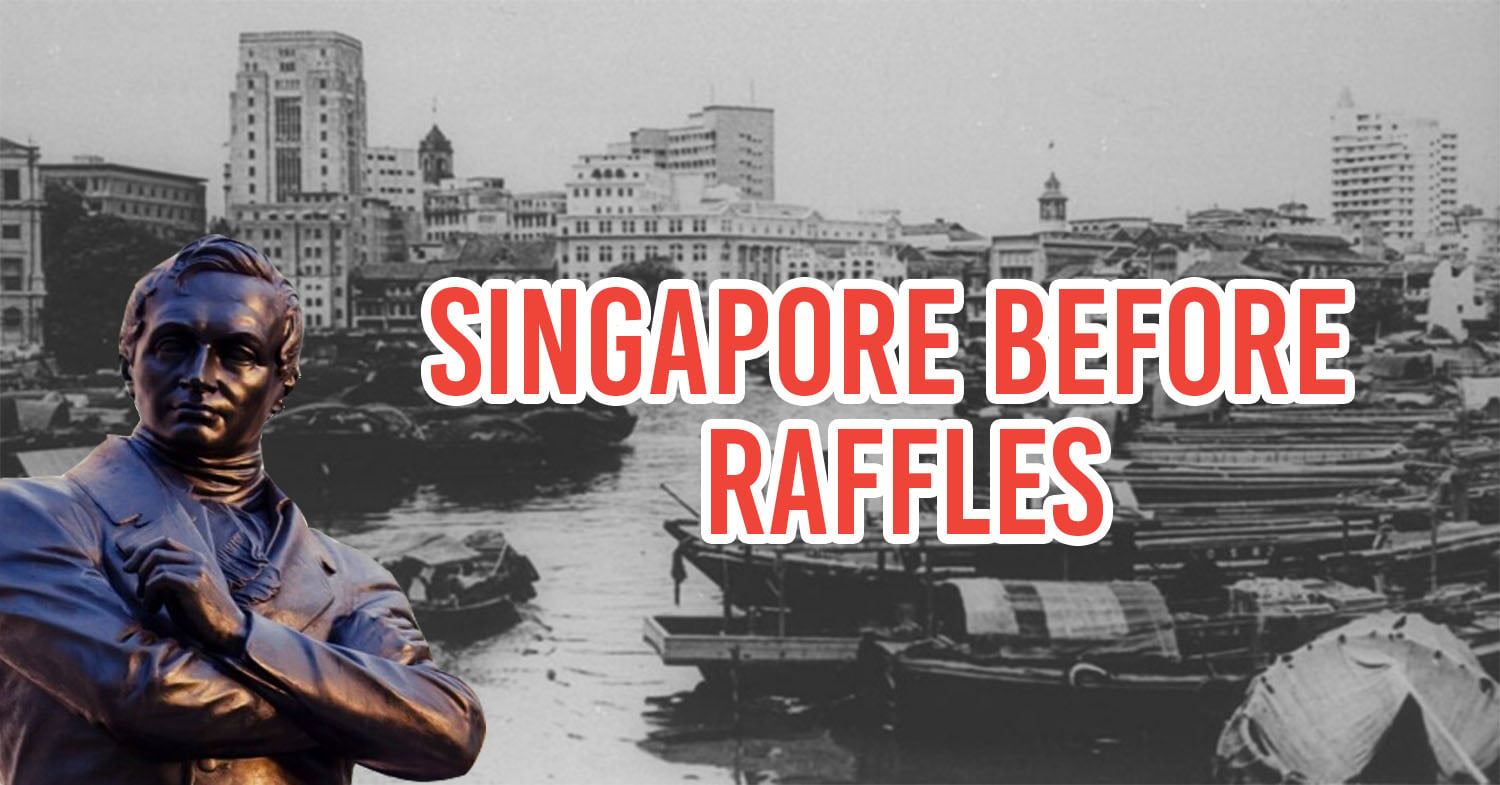
1,500 Years Of Singapore’s Ancient History Before Raffles Came Along – The Concise Version
By
Eunice Oh
-
26 Jan 2017, 3:56 pm
Singapore’s History
From Sir Stamford Raffles to Yusof Bin Ishak, most of us probably know at least something about Singapore’s past.
Our ancient history, however, somehow seems to be forgotten, left untouched in our old history books. So ask yourself, what really was the foundation of our tiny little red dot?
Let’s take a good look through the centuries to find out:
1. The First Written Record
Ujong Know About It
Ever heard of Pulau Ujong? Try using Google maps and you’ll get this.
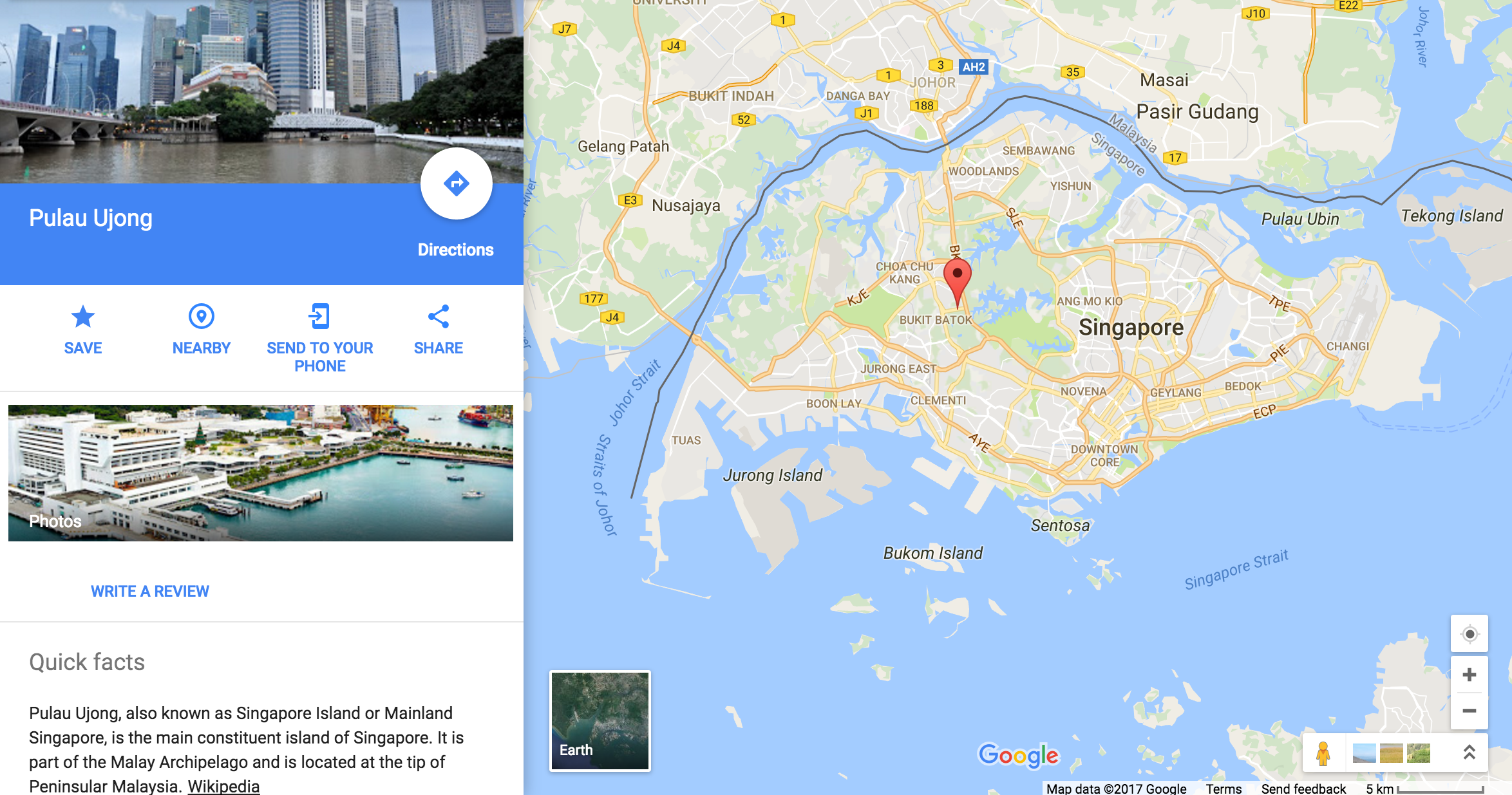
Shocking, isn’t it? Pulau Ujong is actually a place you’ve been to all your life – the main island of Singapore.
The first written record referred to Singapore as Po Lo Chung (蒲羅中), the Chinese translation of Pulau Ujong, which literally means “the island at the end of the peninsula”.
Travellers en route from the Straits of Malacca to the South China Sea and back would pass by the island all the time, causing Singapore to be called the “End Island”.
It is also said that the island was inhabited by cannibals with 5-inch to 6-inch tails, but we’d like to believe that’s just a rumour.
2. The 13th Century
No Lion About It
From the 12th to 13th century, Singapore was known as Temasek – the Sea Town. This is where our favourite story comes in, involving an alleged lion sighting:
[arve url=”[MEDIA=youtube]Tzc7BkBMLvA”[/MEDIA]]
This was the start of the kingdom of Singapura. From here, the kingdom grew under the leadership of five different kings: Sang Nila Utama, Seri Wikrama Wira, Seri Rana Wikrama, Seri Maharaja and Iskandar Shah.
Sang Nila Utama was the prince of Palembang, Srivijaya and ruled Singapore for 48 years. Although his remains cannot be found, it is said that he was buried at Fort Canning Hill (formerly known as Bukit Larangan or Forbidden Hill), which was known to be an ancient royal palace back in the day.
3. The 14th Century
The Tooth, And Nothing But The Tooth
In 1320, the Mongol court went on a mission to a place they called Long Ya Men (龙牙门), otherwise known as Dragon’s Tooth Strait, to gather some elephants.
Many believe that this was none other than Keppel Harbour, as it used to have a structure that looked like a dragon’s tooth up until the 19th century, when the British blew it up.
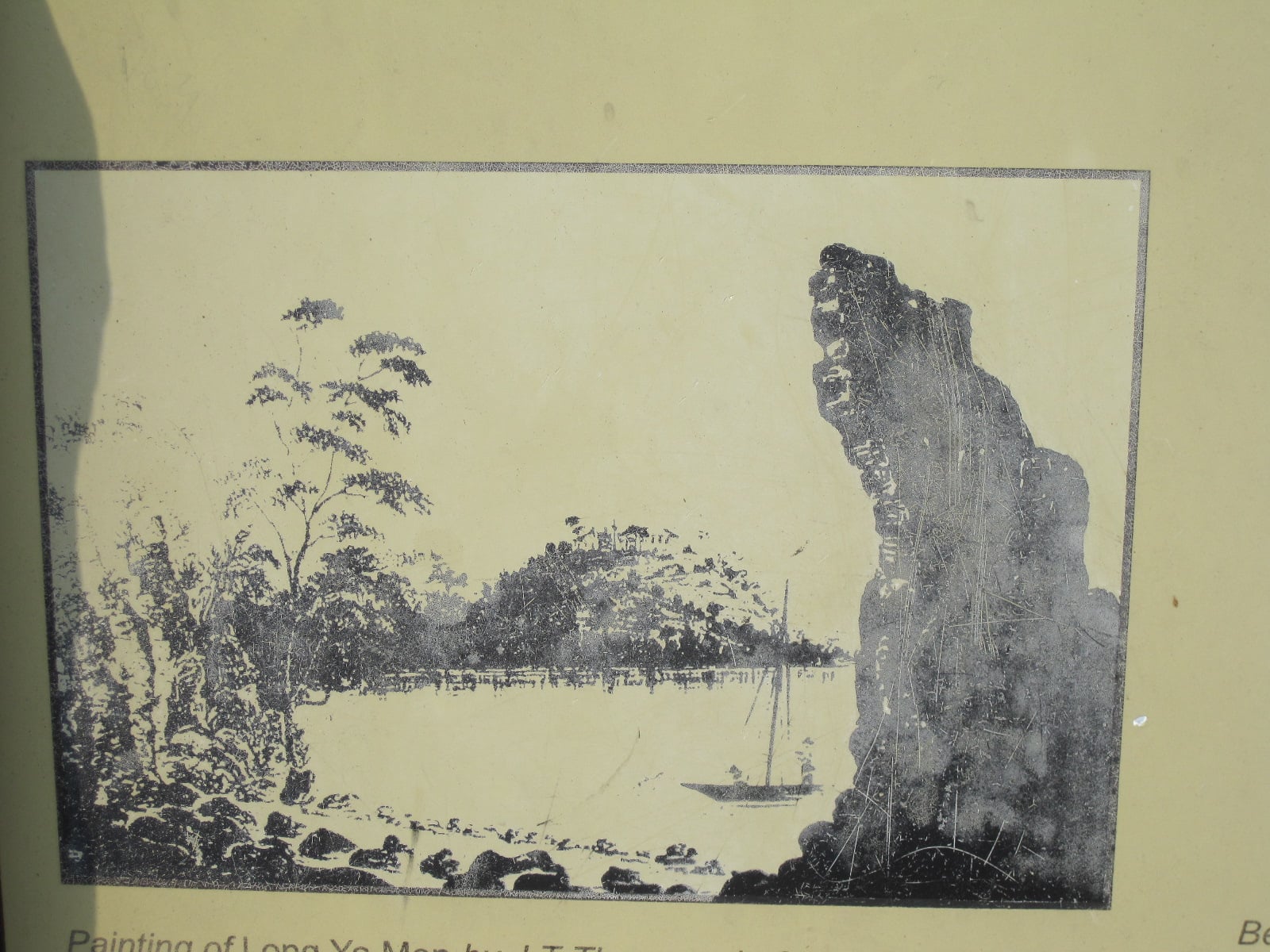
Source
Nevertheless, it’s strange to think that we once had so many elephants roaming our island.
In 1330, Chinese traveller Wang Dayuan had a first-hand account of what Singapore was like in the 14th century. He described the island as Dan Ma Xi (淡马溪 aka Temasek) consisting of two settlements: Banzu and Long Ya Men. Banzu was a peaceful trading port city while Long Ya Men was a dangerous, pirate-infested area.
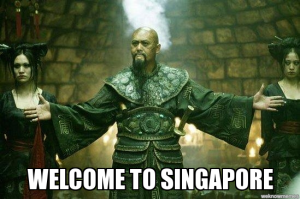
Source
What’s even more interesting is that he noticed that the Malays and Chinese lived peacefully together, very much like Singapore today.
The Lion Kings
After Sang Nila Utama died in 1347, his eldest son Sri Wikrama Wira took the throne as the second Raja of the kingdom. It was under him that the first attempt by the Siamese to take control of the island took place, but because of the arrival of some Chinese ships, the invasion was futile.
Even in the 1350s, the powerful Javanese kingdom of Majapahit sent fleets to invade Singapore, leading to a 3-day battle. Still, we were victorious as the Javanese soldiers were forced to flee.
Following the death of Seri Wikrama Wira, his son Seri Rana Wikrama succeeded him. Seri Rana Wikrama was responsible for establishing great diplomatic ties with one of the oldest Islamic kingdoms in Southeast Asia, Peureulak Sultanate.
Once Seri Rana Wikrama passed away, his son Seri Maharaja also succeeded him in 1362. Heard of the famous swordfish story?
When the island’s coast was ravaged by swordfishes, Seri Maharaja told his soldiers to line up along the coast to fend off the fishes. However, a young boy suggested building a barrier of banana stems instead.
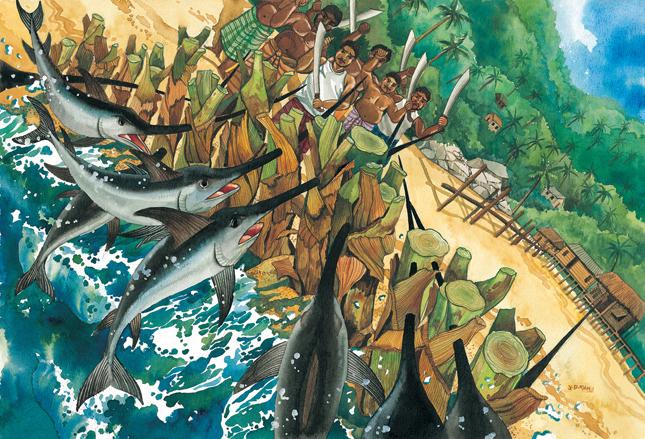
Source
Obviously, the latter was the more intelligent solution – though it came at the expense of the boy’s life. Seri Maharaja was so jealous that he ordered his men to kill the young boy at the top of a hill where he lived, which we now know today as Redhill, or Bukit Merah Hill, so named for the boy’s spilt blood.
In 1389, Sultan Iskandar Shah became the first non-family member to succeed Seri Maharaja. One of the Sultan’s concubines was suspected of adultery, and he stripped her naked in public. In revenge, the woman’s father sent a secret message to the king of Majapahit, encouraging him to take over the Sultan’s kingdom.
After a few months, a massacre ensued in Singapore, causing Sultan Iskandar Shah to flee to Malacca.
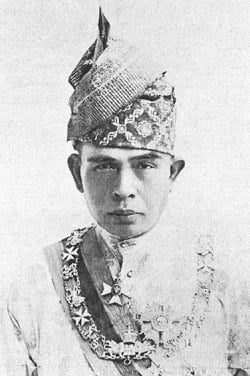
Source
Inevitably, this helped us establish good trading ties with Malacca.
We haven’t forgotten our last king, though. There’s a piece of Fort Canning devoted to him, called Keramat Iskandar Shah:
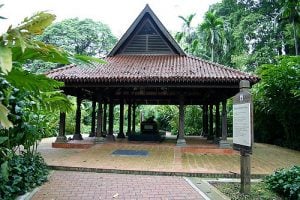
Source
4. The 15th Century
Thai-gapore
Initially, in the 15th century, Singapore was a vassal state to Thailand. Eventually, however, the Sultanate of Malacca took complete control over the island. In 1587, after the Portuguese seized Malacca, they destroyed Singapore’s settlements and left it to sink into obscurity.
Some people may wish that Singapore was still part of Thailand today, though – perhaps flea markets like Artbox may come more often and we can celebrate the Songkran festival here too.
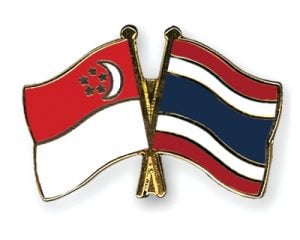
Source
The Rest Is History
After more than two whole centuries, Sir Stamford Raffles stepped into the picture and kicked off Singapore’s progress to its current state.
Today, we’ve made a name for ourselves and established ties far beyond any of our past kingdoms. Our five kings would have been extremely proud.
- Joined
- Mar 5, 2019
- Messages
- 11,137
- Points
- 113
thank you for the info!
1,500 Years Of Singapore’s Ancient History Before Raffles Came Along – The Concise Version
By
Eunice Oh
-
26 Jan 2017, 3:56 pm
Singapore’s History
From Sir Stamford Raffles to Yusof Bin Ishak, most of us probably know at least something about Singapore’s past.
Our ancient history, however, somehow seems to be forgotten, left untouched in our old history books. So ask yourself, what really was the foundation of our tiny little red dot?
Let’s take a good look through the centuries to find out:
1. The First Written Record
Ujong Know About It
Ever heard of Pulau Ujong? Try using Google maps and you’ll get this.
Shocking, isn’t it? Pulau Ujong is actually a place you’ve been to all your life – the main island of Singapore.
The first written record referred to Singapore as Po Lo Chung (蒲羅中), the Chinese translation of Pulau Ujong, which literally means “the island at the end of the peninsula”.
Travellers en route from the Straits of Malacca to the South China Sea and back would pass by the island all the time, causing Singapore to be called the “End Island”.
It is also said that the island was inhabited by cannibals with 5-inch to 6-inch tails, but we’d like to believe that’s just a rumour.
2. The 13th Century
No Lion About It
From the 12th to 13th century, Singapore was known as Temasek – the Sea Town. This is where our favourite story comes in, involving an alleged lion sighting:
[arve url=”[MEDIA=youtube]Tzc7BkBMLvA”[/MEDIA]]
This was the start of the kingdom of Singapura. From here, the kingdom grew under the leadership of five different kings: Sang Nila Utama, Seri Wikrama Wira, Seri Rana Wikrama, Seri Maharaja and Iskandar Shah.
Sang Nila Utama was the prince of Palembang, Srivijaya and ruled Singapore for 48 years. Although his remains cannot be found, it is said that he was buried at Fort Canning Hill (formerly known as Bukit Larangan or Forbidden Hill), which was known to be an ancient royal palace back in the day.
3. The 14th Century
The Tooth, And Nothing But The Tooth
In 1320, the Mongol court went on a mission to a place they called Long Ya Men (龙牙门), otherwise known as Dragon’s Tooth Strait, to gather some elephants.
Many believe that this was none other than Keppel Harbour, as it used to have a structure that looked like a dragon’s tooth up until the 19th century, when the British blew it up.

Source
Nevertheless, it’s strange to think that we once had so many elephants roaming our island.
In 1330, Chinese traveller Wang Dayuan had a first-hand account of what Singapore was like in the 14th century. He described the island as Dan Ma Xi (淡马溪 aka Temasek) consisting of two settlements: Banzu and Long Ya Men. Banzu was a peaceful trading port city while Long Ya Men was a dangerous, pirate-infested area.

Source
What’s even more interesting is that he noticed that the Malays and Chinese lived peacefully together, very much like Singapore today.
The Lion Kings
After Sang Nila Utama died in 1347, his eldest son Sri Wikrama Wira took the throne as the second Raja of the kingdom. It was under him that the first attempt by the Siamese to take control of the island took place, but because of the arrival of some Chinese ships, the invasion was futile.
Even in the 1350s, the powerful Javanese kingdom of Majapahit sent fleets to invade Singapore, leading to a 3-day battle. Still, we were victorious as the Javanese soldiers were forced to flee.
Following the death of Seri Wikrama Wira, his son Seri Rana Wikrama succeeded him. Seri Rana Wikrama was responsible for establishing great diplomatic ties with one of the oldest Islamic kingdoms in Southeast Asia, Peureulak Sultanate.
Once Seri Rana Wikrama passed away, his son Seri Maharaja also succeeded him in 1362. Heard of the famous swordfish story?
When the island’s coast was ravaged by swordfishes, Seri Maharaja told his soldiers to line up along the coast to fend off the fishes. However, a young boy suggested building a barrier of banana stems instead.

Source
Obviously, the latter was the more intelligent solution – though it came at the expense of the boy’s life. Seri Maharaja was so jealous that he ordered his men to kill the young boy at the top of a hill where he lived, which we now know today as Redhill, or Bukit Merah Hill, so named for the boy’s spilt blood.
In 1389, Sultan Iskandar Shah became the first non-family member to succeed Seri Maharaja. One of the Sultan’s concubines was suspected of adultery, and he stripped her naked in public. In revenge, the woman’s father sent a secret message to the king of Majapahit, encouraging him to take over the Sultan’s kingdom.
After a few months, a massacre ensued in Singapore, causing Sultan Iskandar Shah to flee to Malacca.

Source
Inevitably, this helped us establish good trading ties with Malacca.
We haven’t forgotten our last king, though. There’s a piece of Fort Canning devoted to him, called Keramat Iskandar Shah:

Source
4. The 15th Century
Thai-gapore
Initially, in the 15th century, Singapore was a vassal state to Thailand. Eventually, however, the Sultanate of Malacca took complete control over the island. In 1587, after the Portuguese seized Malacca, they destroyed Singapore’s settlements and left it to sink into obscurity.
Some people may wish that Singapore was still part of Thailand today, though – perhaps flea markets like Artbox may come more often and we can celebrate the Songkran festival here too.

Source
The Rest Is History
After more than two whole centuries, Sir Stamford Raffles stepped into the picture and kicked off Singapore’s progress to its current state.
Today, we’ve made a name for ourselves and established ties far beyond any of our past kingdoms. Our five kings would have been extremely proud.

- Joined
- Mar 5, 2019
- Messages
- 11,137
- Points
- 113
I think I can only peng kang and eat the fish. the rest really left me dumbstruck. really boleh this chap.i am so impressed he got it done, caught a fish, peng kang fish in bamboo, brought to his new hideout by the pool, makan fish and went to nap. next morning he swam in his pool, watered the lawn, chilled out on his makeshift recliner, and left..... for another project deep in the forest. wah lan eh. all these with only a broomstick.... oops crowbar cum chankol.

hey. on closer inspection this guy doesn't look like or built like indian. Maybe in the borderlands with thai, lao and burma.
I just checked. His youtube says USA. His country code is Thai...
- Joined
- Oct 22, 2008
- Messages
- 4,050
- Points
- 113
1,500 Years Of Singapore’s Ancient History Before Raffles Came Along – The Concise Version
By
Eunice Oh
-
26 Jan 2017, 3:56 pm
Singapore’s History
From Sir Stamford Raffles to Yusof Bin Ishak, most of us probably know at least something about Singapore’s past.
Our ancient history, however, somehow seems to be forgotten, left untouched in our old history books. So ask yourself, what really was the foundation of our tiny little red dot?
Let’s take a good look through the centuries to find out:
1. The First Written Record
Ujong Know About It
Ever heard of Pulau Ujong? Try using Google maps and you’ll get this.
Shocking, isn’t it? Pulau Ujong is actually a place you’ve been to all your life – the main island of Singapore.
The first written record referred to Singapore as Po Lo Chung (蒲羅中), the Chinese translation of Pulau Ujong, which literally means “the island at the end of the peninsula”.
Travellers en route from the Straits of Malacca to the South China Sea and back would pass by the island all the time, causing Singapore to be called the “End Island”.
It is also said that the island was inhabited by cannibals with 5-inch to 6-inch tails, but we’d like to believe that’s just a rumour.
2. The 13th Century
No Lion About It
From the 12th to 13th century, Singapore was known as Temasek – the Sea Town. This is where our favourite story comes in, involving an alleged lion sighting:
[arve url=”[MEDIA=youtube]Tzc7BkBMLvA”[/MEDIA]]
This was the start of the kingdom of Singapura. From here, the kingdom grew under the leadership of five different kings: Sang Nila Utama, Seri Wikrama Wira, Seri Rana Wikrama, Seri Maharaja and Iskandar Shah.
Sang Nila Utama was the prince of Palembang, Srivijaya and ruled Singapore for 48 years. Although his remains cannot be found, it is said that he was buried at Fort Canning Hill (formerly known as Bukit Larangan or Forbidden Hill), which was known to be an ancient royal palace back in the day.
3. The 14th Century
The Tooth, And Nothing But The Tooth
In 1320, the Mongol court went on a mission to a place they called Long Ya Men (龙牙门), otherwise known as Dragon’s Tooth Strait, to gather some elephants.
Many believe that this was none other than Keppel Harbour, as it used to have a structure that looked like a dragon’s tooth up until the 19th century, when the British blew it up.

Source
Nevertheless, it’s strange to think that we once had so many elephants roaming our island.
In 1330, Chinese traveller Wang Dayuan had a first-hand account of what Singapore was like in the 14th century. He described the island as Dan Ma Xi (淡马溪 aka Temasek) consisting of two settlements: Banzu and Long Ya Men. Banzu was a peaceful trading port city while Long Ya Men was a dangerous, pirate-infested area.

Source
What’s even more interesting is that he noticed that the Malays and Chinese lived peacefully together, very much like Singapore today.
The Lion Kings
After Sang Nila Utama died in 1347, his eldest son Sri Wikrama Wira took the throne as the second Raja of the kingdom. It was under him that the first attempt by the Siamese to take control of the island took place, but because of the arrival of some Chinese ships, the invasion was futile.
Even in the 1350s, the powerful Javanese kingdom of Majapahit sent fleets to invade Singapore, leading to a 3-day battle. Still, we were victorious as the Javanese soldiers were forced to flee.
Following the death of Seri Wikrama Wira, his son Seri Rana Wikrama succeeded him. Seri Rana Wikrama was responsible for establishing great diplomatic ties with one of the oldest Islamic kingdoms in Southeast Asia, Peureulak Sultanate.
Once Seri Rana Wikrama passed away, his son Seri Maharaja also succeeded him in 1362. Heard of the famous swordfish story?
When the island’s coast was ravaged by swordfishes, Seri Maharaja told his soldiers to line up along the coast to fend off the fishes. However, a young boy suggested building a barrier of banana stems instead.

Source
Obviously, the latter was the more intelligent solution – though it came at the expense of the boy’s life. Seri Maharaja was so jealous that he ordered his men to kill the young boy at the top of a hill where he lived, which we now know today as Redhill, or Bukit Merah Hill, so named for the boy’s spilt blood.
In 1389, Sultan Iskandar Shah became the first non-family member to succeed Seri Maharaja. One of the Sultan’s concubines was suspected of adultery, and he stripped her naked in public. In revenge, the woman’s father sent a secret message to the king of Majapahit, encouraging him to take over the Sultan’s kingdom.
After a few months, a massacre ensued in Singapore, causing Sultan Iskandar Shah to flee to Malacca.

Source
Inevitably, this helped us establish good trading ties with Malacca.
We haven’t forgotten our last king, though. There’s a piece of Fort Canning devoted to him, called Keramat Iskandar Shah:

Source
4. The 15th Century
Thai-gapore
Initially, in the 15th century, Singapore was a vassal state to Thailand. Eventually, however, the Sultanate of Malacca took complete control over the island. In 1587, after the Portuguese seized Malacca, they destroyed Singapore’s settlements and left it to sink into obscurity.
Some people may wish that Singapore was still part of Thailand today, though – perhaps flea markets like Artbox may come more often and we can celebrate the Songkran festival here too.

Source
The Rest Is History
After more than two whole centuries, Sir Stamford Raffles stepped into the picture and kicked off Singapore’s progress to its current state.
Today, we’ve made a name for ourselves and established ties far beyond any of our past kingdoms. Our five kings would have been extremely proud.
quite concise actually but not having very detailed info about sinkieland which had to be gathered here and there
it is true that people of all ethnicities did lived quite peacefully togather in sinkieland ...the very resson i never bought LKY fear mongoring of being gobbled by the ocean of malays so as to speak ..this line of pitching races against one another ,i reckon ,is nothing but for political and vote banks
now ,what interested me was why both superpowers at that ancient time by passed sinkiland ....i figure ,the ancient shipping vessells of that era and the technology avilable has plenty to do with singapore as an important post
ancient shipping solely were dependent on monsoon winds ..and ports that provided that facility became important ...hence Palembang in Sumatra to the chinese and Kedah to the Indians became the important posts in this region ...one must note the earliest ancient city in penisular malaya was kedah and not malacca ...and the earliest chinese post or chinese settlement in this region was palembang...and the earliest admixture of chinese men with local native Malay ladies called pernakan were from Palembang and not malacca ...LKY ancestry as a Pernakan is from Palembang
- Joined
- Sep 22, 2008
- Messages
- 90,287
- Points
- 113
Current sultannof kedah us from that ancient Hindu kingdom and longest reigning kingship in maybe South East Asia. Definitely in Malaysia.
- Joined
- Sep 12, 2019
- Messages
- 8,510
- Points
- 113
Chinese knows a better ways of making roti prata. Into a buns, steamed more healthy.
Ah neh is dirty food handling, left hand wipes arseshits.... right hand who know what they do with it when they shit in toilet. Play with dicky I guess.
Then their shit is camouflage with their shit skin so those who eat roti prata might have eaten their shit liao!
- Joined
- Sep 22, 2008
- Messages
- 90,287
- Points
- 113
Indian vegetarian shit more healthy than chinese bat and rat infested pork and lard laden virus infected shit.Then their shit is camouflage with their shit skin so those who eat roti prata might have eaten their shit liao!
- Joined
- Sep 12, 2019
- Messages
- 8,510
- Points
- 113
Indian vegetarian shit more healthy than chinese bat and rat infested pork and lard laden virus infected shit.
Chinese also got eat vegetarian! Ah neh shit contains many fish mutton curry and is watery!
- Joined
- Oct 7, 2012
- Messages
- 5,228
- Points
- 113
sinkies can never compete with 3rd world slumboys when it cums to hard work, resourcefulness, vision, and sheer grit and determination.
Impressive, but:
- there is no roof over the pool
- there is no system to change the water in the pool, manually change the water every few days is very labour intensive, if don't change, the pool will become a breeding ground for mosquitoes
- wonder how long the "paint" will last
Similar threads
- Replies
- 5
- Views
- 395
- Replies
- 0
- Views
- 431
- Replies
- 35
- Views
- 2K
- Replies
- 6
- Views
- 1K
- Replies
- 22
- Views
- 2K
